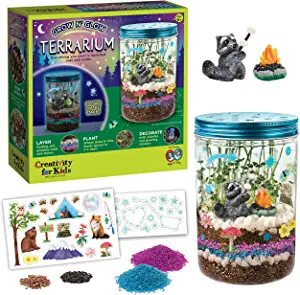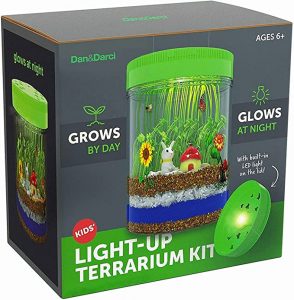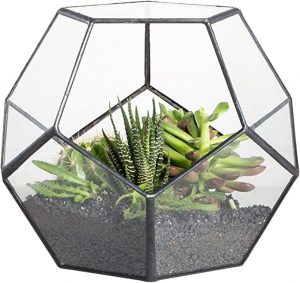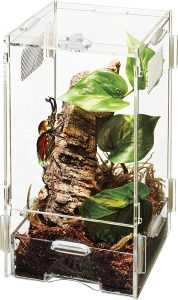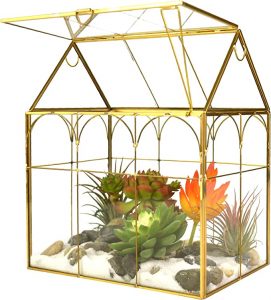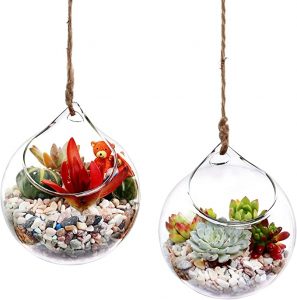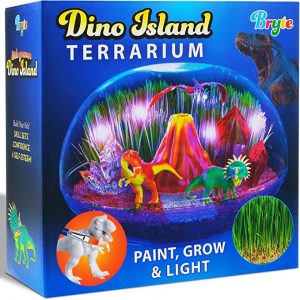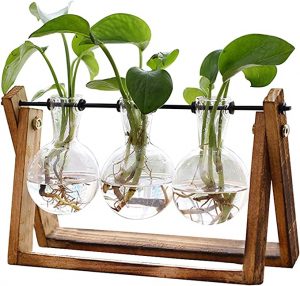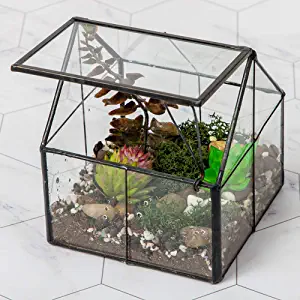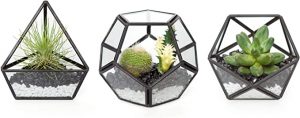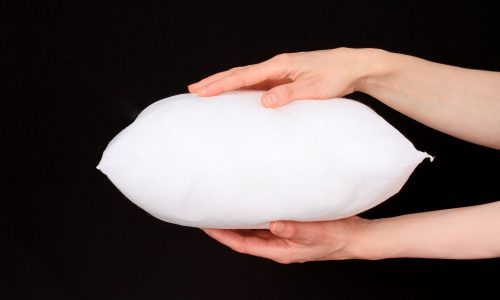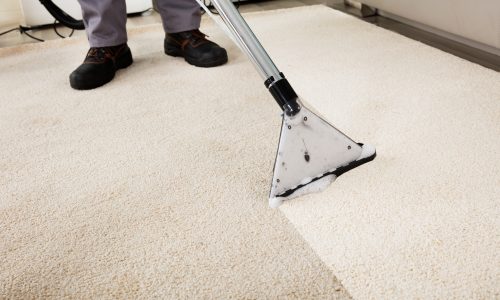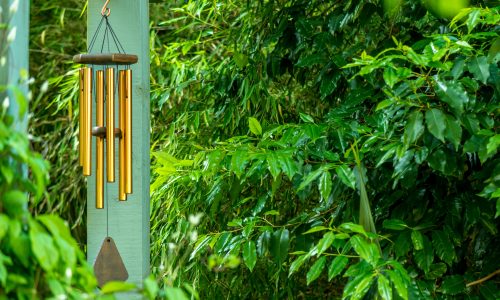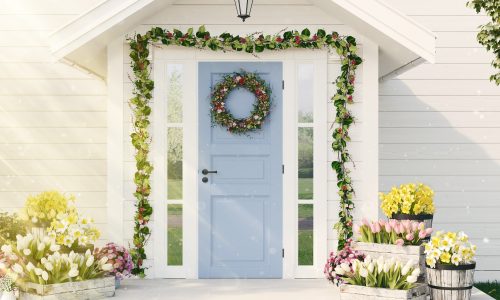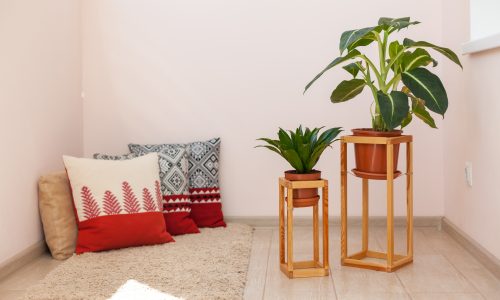The Best Terrarium
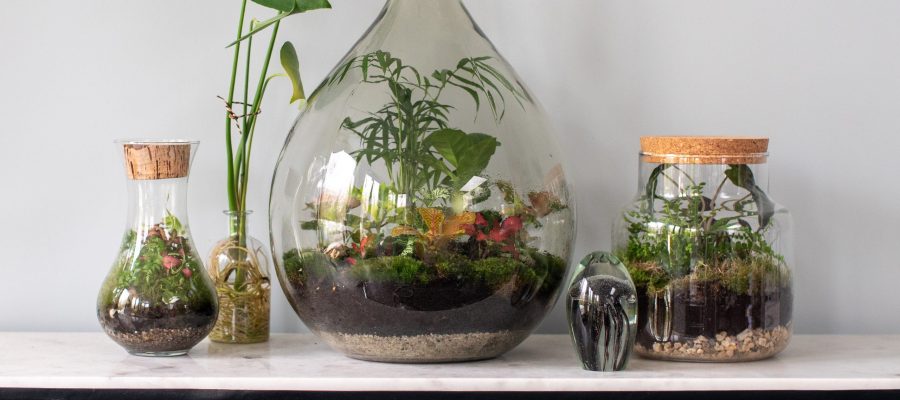
Our Review Process
Don't Waste Your Money is focused on helping you make the best purchasing decision. Our team of experts spends hundreds of hours analyzing, testing, and researching products so you don't have to. Learn more.
Our Picks For The Top Terrariums
- 1. Creativity for Kids Science Activity Grow ‘N Glow Terrarium Kit
- 2. Dan&Darci STEM Activity Light-Up Terrarium Kit
- 3. NCYP Pentagon Geometric Glass Tabletop Terrarium
- 4. Zilla Small Tree Dwelling Invertebrates Micro Habitat Terrarium Enclosure
- 5. Yimorence Glass Lidded Greenhouse Terrarium
- 6. Ivolador Hanging Plants Globe Shap Glass Terrarium
- 7. Bryte Dinosaur Paintable Figure Light Up Terrarium Kit
- 8. XXXFLOWER Wooden Stand Glass Bulb Vase Propogation Terrarium
- 9. Ferrisland Glass Tabletop Lidded Greenhouse Terrarium
- 10. Mkono Mini Tabletop Glass Geometric Terrarium Set, 3 Piece
Ideal for kids between 5 and 8, this kit provides everything you need to build a terrarium. You’ll get potting mix, chia and wheat grass seeds, glow-in-the-dark figurines, stickers and glowing sand. The terrarium grows inside a small jar, making it easy to fit into your space.
Easy to AssembleIn just minutes, your child will have a terrarium that’s not only effective at cultivating plants, but also attractive.
Measuring 4” x 6”, this small terrarium is great for setting up in a bedroom. At night, an LED light automatically activates, creating a subtle glow that shows off your hard work. A step-by-step instruction booklet makes setting up the terrarium and planting the seeds easy.
Entertaining and EducationalThis unique terrarium has a built-in LED light that creates an attractive glow at night while promoting glowing throughout the day.
Featuring an attractive geometric shape, this terrarium can be used for planting succulents, ferns, cactuses or anything else you find suitable. The glass is clear sodium calcium for maximum visibility without sacrificing breathability. Since the design isn’t watertight, this terrarium is not for hydroponic plants.
Versatile UsesThis terrarium features a geometric glass shape that makes it great for housing plants or other objects.
For young scientists who are into insects and reptiles, this terrarium is a great way to collect and observe nature’s smallest creatures. The clear acrylic provides a 360-degree view, and the design is stackable, allowing you to set up multiple terrariums in a small space. A locking handle will ensure your new pets stay safely inside.
For Serious CollectorsThis terrarium is designed for housing insects, including amphibians, small reptiles and invertebrates.
Buying Guide
Science is an important part of early education. Starting at the age of 3, children can begin to create a foundation that they can then build on for many years.
The key with younger children is to make education fun. Little minds love to explore, so engaging them with toys and games they enjoy while they’re learning can be a great way to get them started. A terrarium can be one of those tools, helping children learn about botany while also enjoying the thrill of nurturing and caring for a living organism.
But terrariums aren’t just for young botanists. They’re often used by people of all ages to cultivate greenery. The glass enclosure is perfect for displaying anywhere in your home, from your patio or balcony to your bedroom or living room. Smaller ones can even be set up as a centerpiece on your kitchen table.
A terrarium acts similarly to a greenhouse, trapping the water vapor naturally released by soil and plants. This creates a humid environment that helps plants thrive. Like greenhouses, terrariums are also made almost entirely of glass, so they let in plenty of light. They thrive near windows or outdoors, provided you don’t expose your terrarium plants to direct sunlight.
There are two different types of terrariums: open and closed. The type of terrarium you choose will drive the plants you grow inside. A closed terrarium traps a higher amount of humidity inside. An open terrarium lets air through, which means you’ll likely need to water the plants weekly. With open terrariums, you’ll want to go with plants that can grow in drier environments like cacti and aloe, while closed should be used for plants that can handle constant moisture, such as baby ferns and neoregelia.
There are other elements that can make a difference in creating a healthy environment for your greenery. Open terrariums can benefit from pebbles in addition to the soil, charcoal and rocks often found in a closed terrarium.
What to Look For
- When you’re choosing a terrarium, consider your goal. If you’re shopping for one for your youngest family members, one designed for children is likely best. But some are simplified for elementary school children, while many others can be used by tweens, teens and adults.
- Your terrarium will take time to set up. You can buy kits that provide the soil, rocks, seeds and enclosure, but you can also purchase each item separately. You’ll first need a container, but it should be large enough to fit the greenery you’re hoping to grow in it. You can then add soil, gravel, charcoal and your plants.
- When shopping for plants to grow in your terrarium, try to ensure they won’t touch the edges of the terrarium once fully grown. If not, you might need to upsize your container as your plant grows.
- You can boost the attractiveness of your terrarium by adding figurines and other decorative elements. Brightly colored pebbles or rocks can also give it some visual appeal.
- It can be easier to work with your terrarium if you have a wider opening. But if you have a narrow opening, you can use tools like chopsticks or tongs to arrange and care for your greenery.
- Terrariums come in a variety of sizes. Pay close attention to the dimensions to ensure you’re getting one that will comfortably fit into your space.
- Some terrariums have lights that help you show off your terrarium as it grows. Make sure the lights are safe for the types of greenery you’re growing.
- If you’re new to terrariums, look for an all-in-one kit that includes an instruction booklet so that you can get up and running without having to spend hours researching.
- Some terrariums aren’t watertight. Those are best for plants that don’t require much watering. You can spritz plants with water using a spray bottle, but pouring water into these types of containers isn’t a good idea, even if you have water-absorbing features like soil.
More to Explore
Some inventions are intentional, coming from years of attempts and misfires. But that isn’t the case with terrariums, which were invented by accident in the 1820s. A doctor in London’s East End was frustrated that the smoke spewed by nearby manufacturers kept his ferns from growing. He’d slipped an insect chrysalis into a bottle at one point, and one day, he noticed a fern spore had sprouted. That was where his idea for a terrarium began. In fact, in the early days, terrariums were named Wardian cases after their inventor, Nathaniel Bagshaw Ward.
Ward memorialized his discovery in a book titled Of the Growth of Plants in Closely Glazed Cases, published in 1842. Both his book and the cases were on display at the 1851 Great Exhibition of the Works of Industry of All Nations.

